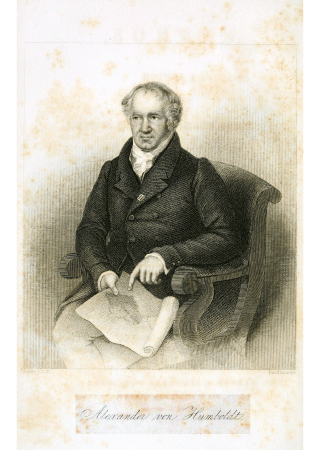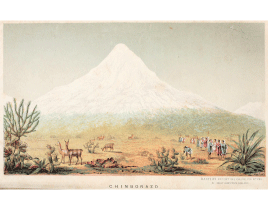Humboldt Expeditions
- ... Alexander von Humboldt was a German scientist and traveller with a cosmopolitan education and a wide range of interests?
- ... on the basis of his expeditions, Humboldt became the founder of volcanology; the science of terrestrial magnetism, geobotany and climatology: and in the latter subject he first proposed the concept of isotherms?
- ... the results of Humboldt's expeditions inspired scientific research into Latin America, and impacted methods and goals of research in geography and natural science?
- ... in Cuba, the expeditions conducted detailed studies of statistical and political conditions in the Spanish colonies?
- ... places named in honour of Humboldt include two bays in California and New Guinea, two mountain ranges in central Asia and Nevada, a lake and river in Nevada, a glacier in northwest Greenland, a current in the Pacific Ocean and many cities in America?
- ... Humboldt's scientific discoveries place him among the most notable figures in history?
- ... Humboldt was one of the first to voice the opinion that the continents bordering the Atlantic Ocean were once a joined land mass?
- Humboldt's expeditions took place between 1799 and 1804, and in 1826.
- In eight months of travelling around Russia, Humboldt covered over 15,000 kilometers.
- During one expedition, Humboldt and Bonpland climbed Chimborazo to over 5,000 meters.
- The Latin America expedition followed the Rio Negro to 2° northern latitude.
- On Tenerife, the expedition climbed the mountain Pik de Teyde to 3716 meters.
June 4th, 1799, Humboldt and the French botanist Bonpland from La Coruñabay, climbed Pik de Teyde on the island of Tenerife.. July 17th they arrived at Cuman in Venezuela and so stood on American soil. They travelled by canoe along the Orinoco to its confluence with the Atabapo, and then travelled along Rio Negro which they followed to 2° northern latitude and via the Casiquiare, returned to the Orinoco. At Angostura they left the river and returned to Cuman by land. In November of 1800 they sailed to Havana and explored all over Cuba. In March of 1801 they continued to Cartagena. Along the Rio Magdalena, they travelled to Honda, then Bogota and Quito. Humboldt devoted himself to the study of volcanic peaks. On the 23rd of June, 1802, they climbed Chimborazo to over 5,000 meters. They descended through Cuence and Loja into the valley of the upper Marañon, investigated the western slopes of the Peruvian Andes and travelled all the way to the ocean. After a stay in Lima, they journeyed from Calla to Acapulco in Mexico, where they arrived in March 1803. They spent an entire year exploring Mexico, travelling mainly through volcanic mountain ranges. In 1804 they returned to Cuba. In 1804, they returned to Europe, via the United States. In 1826, Humboldt explored Asian Russia with mineralogist G. Ros and German zoologist Christian Gottfried Ehrenberg.


